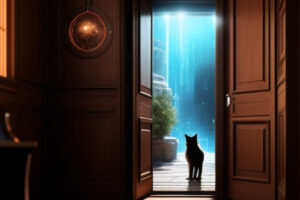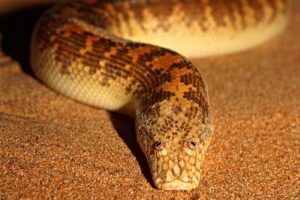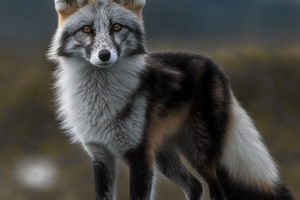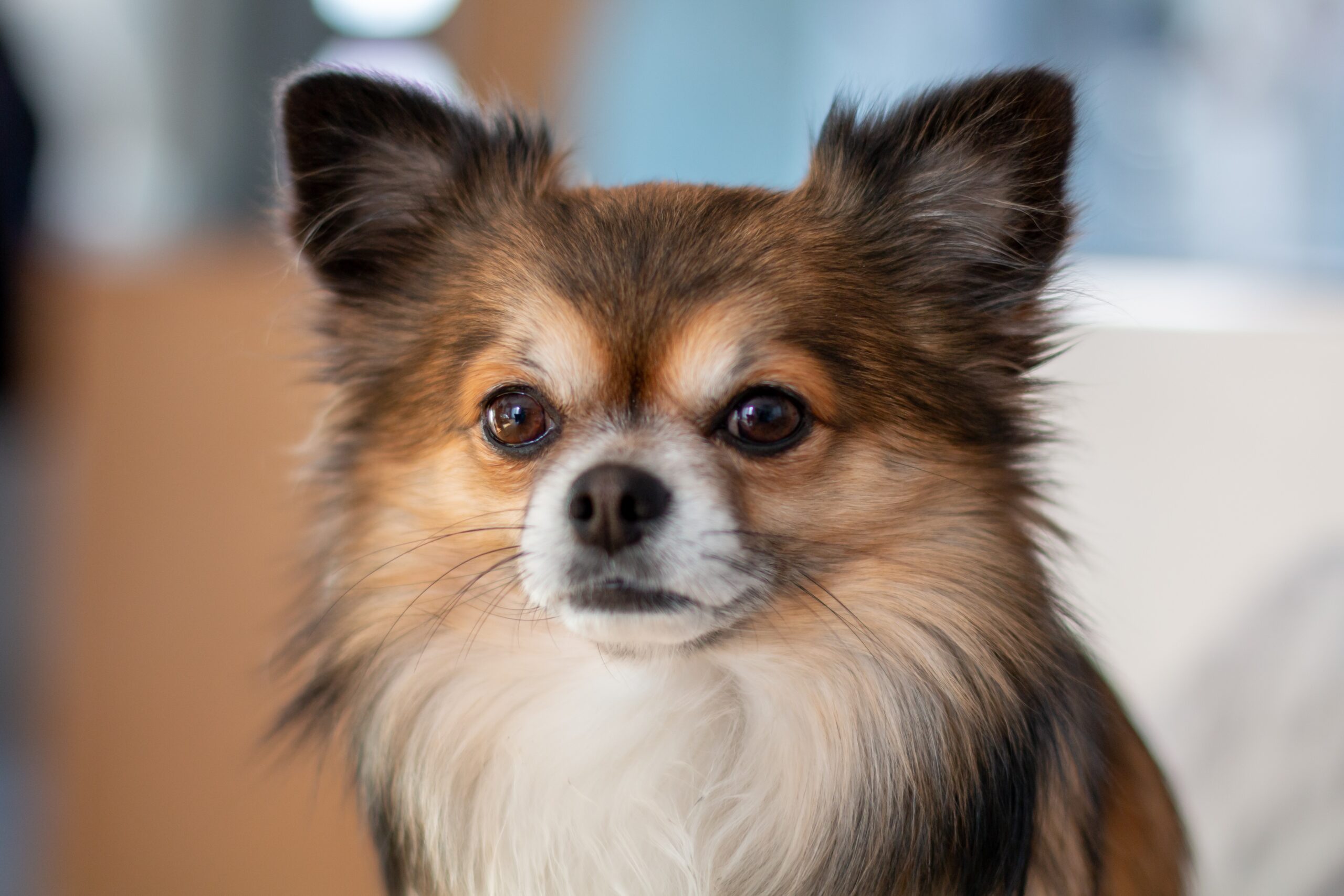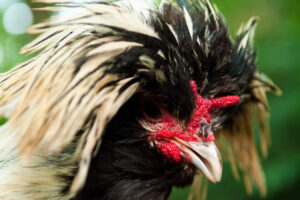Care
While some animals abandon their eggs and offspring in the hope that one of them will survive, other animals guard their offspring diligently.
The offspring crawl out of the mother’s back
The large, flattened pipefish lives in pools in the tropics of South America. After spawning, the female glues the eggs to her back in very tight rows, so nothing looks like a mosaic of tiles.
The skin on the back then swells and surrounds the eggs from all sides. Finally, a small transparent cover forms over each egg, so that each one of them lies protected in a kind of aquarium.
The little carts mature into full-grown carts on the mother’s back. When the animals have reached full maturity, the lid of each individual compartment is removed and the offspring hatch.
VIDEO: Watch the frogs crawl out:
The father toils at the ice
The Mallee hen has developed an extremely complex and difficult method of hatching eggs. The birds build enormous nesting mounds of sand, soil and plant remains, which are approx. 22 meters in circumference.
The female lays her eggs in depressions in the hills, which then hatch with the help of the heat from decaying plant remains.
The construction of the hatchery and its maintenance is the main part of the male bird’s work cycle, but he toils around the clock for eight to ten months a year.
When the female bird has laid the eggs, she uses temperature-sensitive cells around her beak to determine whether the environment of the eggs is too hot or cold and whether she needs to remove sand from them or add more.
The advantage of this hard work is that the chicks are protected throughout the hatching period and can fend for themselves pretty much as soon as they hatch.
Whale calves rob their parents of a night’s sleep
All parents of infants know that newborn babies keep watch over their parents. In fact, it can be assumed that a two-year-old child has stolen a thousand hours of nighttime sleep from his parents.
This would seem like a piece of cake to hornets and toads, because their calves don’t sleep at all for the first month of their lives, and since these young calves are by no means capable of fending for themselves, the parents are forced to be constantly awake.
Rhinos sleep with one hemisphere at a time
Hornets cannot allow themselves to sleep deeply, because they need to catch their breath and keep an eye on their enemies. Instead, they swim in circles, while resting one hemisphere and one eye at a time
Biologists do not understand this, because it is generally believed that young animals need a lot of rest at first so that the various development and growth processes can begin in the right way.
Whales are very special when it comes to sleep, because they are never completely asleep. The reason is, among other things, that their breathing is conscious and not involuntary, like in other animals. When dolphins and killer whales sleep, the two hemispheres of the brain take turns resting.
Kiwis are born with giant eggs in their bellies
The New Zealand kiwi lays only one egg at a time. The parents, on the other hand, spend an enormous amount of time and energy on this one egg.
The egg can weigh a quarter of the mother’s weight and take up so much space that all her organs fold together at the top of the abdomen.
She can hardly eat anything and the days before she lays her egg she can barely walk and spends the time cooling her belly in a pool of water.
When she finally hatches the egg, she needs to gather her strength, so the father lies on the egg for almost three months.
The reward for the hard work of the parents is that the young is very well developed when it is born and can pretty much fend for itself.
Child rearing follows the death of the mother
The eight-armed giant octopus in the Pacific Ocean lives fast and dies young.
Even if the animals can weigh more than 50 kg and the length of the arms will be between eight and meters, this octopus will rarely be older than four years.
The male dies shortly after hatching, but the female has duties to perform after that.
First, she has to find a hole in which she lays up to 100,000 eggs, and after that, she constantly swirls oxygen-rich seawater over the eggs.
Experiments have shown that if the octopus mother’s careful care was not used, almost no eggs would hatch.
All this hard work takes its toll, however, as the female can never leave her eggs unattended and will starve to death as a result.
Feeding
The newborn offspring of the animals usually have enormous appetites and the parents may have to make great sacrifices to feed them.
Fat mothers give birth to fitter offspring
Marine mammal mothers often gain hundreds of pounds before molting. The extra weight allows them to provide the young with fatty milk, without having to feed themselves.
A nursing mother needs a lot of energy. She needs both to have enough nutrition herself and to be able to provide milk for the offspring.
In the case of marine mammals, the mother must produce enormous amounts of milk. The offspring need to develop a thick layer of fat as soon as possible in order to keep warm in the cold sea.
In addition, the offspring are so helpless that the adult animals are not allowed to look at them while they are growing up.
The parents do not have time to forage and as a result have to accumulate fat before the offspring are born, in order to be able to survive without food for several months.
Polar bears, for example, need to gain one to two hundred kilos before it usually occurs to them to become a lizard.
Sea elephants need to accumulate three to four hundred kilos of fat on their bodies, while beavers must gain several tons in order to provide their calves with at least one hundred liters of milk a day.
The milk of marine mammals is generally very fatty, because the young have to grow as fast as possible. The fat percentage in the milk of a walrus mother must be approximately 30 percent for the cubs to gain one kilogram a day.
A newborn walrus weighs 45-75 kg, but after a year on the weanling, the animal’s weight has reached approximately 400 kg.
Discus fish feed their offspring with their entire body
Popular aquarium fish, these tropical fish are among the few fish species that feed their offspring themselves.
However, this does not happen in such a way that the parents catch prey and feed it to the young, but rather they release a nutrient-rich slime layer over the whole body, which the offspring then gnaw off.
Although it is not milk, it is true that the young absorb nourishment from the adult animals.
Research on the mucus has revealed that the composition of the mucus, in terms of nutrition and immune effects, changes as the offspring grow.
The young gnaw the mucus layer of the adult animals for two to three weeks, but then the parents begin to take a break, and in the fourth week they disappear completely, and the young have to do the foraging themselves.
Sharp teeth pierce the mother’s skin
What can a mother do who can neither leave her offspring to forage, nor produce milk on which they can survive? She lets her offspring feed on herself.
This technique is used by various worm carts, which belong to the most peculiar type of amphibians. The caterpillar’s offspring first feed on the skin of the adult animals.
Some species let the young eat part of the droppings, while other species have developed a thick layer of skin intended to feed the offspring.
The offspring have extremely sharp teeth, which are useful for removing flakes of skin from the parents. When the animals are large enough to forage for themselves, they lose their fangs and the wounds on their parents’ bodies heal.
Spiders own their offspring to hunt
Various insects and spiders sacrifice their lives for the next generation. They find a well-protected hole or hollow tree trunk where they can lay their eggs and protect them from predators.
They also ensure that the offspring have nutrition when they emerge from the eggs. Namely, the mother dies around this time, and as a result, the young can celebrate their arrival in the world with a rich, nutritious meal.
Other species are still alive when the offspring attack, and the parents thus play a part in bringing out the predatory nature of their offspring.
Protection
If you succeed in hatching and feeding the chicks, the job is by no means over. The helpless offspring must be protected .
The mouth full of offspring
Some fish guard their offspring very diligently, but this is especially true of the various species that hatch their eggs in their mouths.
This method is known among various species that seem to have developed it independently of each other.
Once the spawn’s eggs have been fertilized, the hangar fills its mouth with eggs and swims around with them until they hatch.
The egg is well protected in this way, but the dragonfly, on the other hand, has no way to eat it.
Some species have developed the method further and guard young fish in the same way, so that they can flee to the father’s bilge if they feel threatened.
This protection of the offspring naturally prolongs the father’s fast, but ensures that very many offspring survive the vulnerability that characterizes the first stage of life.
However, this protection is subject to the shortcoming that the heron has a tendency to swallow its own offspring, especially if an attractive spawn swims by.
The heron attacks everything and everyone
Herons breed in large heron colonies in the Northern Hemisphere. Herons do not make nests, but simply lay their eggs directly in the sand and guard their young there.
At first glance, their approach doesn’t seem safe at all, but herons are fearless and the adult birds work closely together to keep all intruders at bay.
If an animal approaches the heron colony, the adult herons immediately take flight and attack the approaching animals by plunging directly onto them, and this only applies if it is a fox or a sheep.
Herons are extremely well-disposed and swoop down with great precision right at the enemy’s head. If such an attack is not enough to make the predator flee, the next step is to peck at the enemy, and even large animals feel the crane’s beak, because the bird flies at a speed of 40 to 50 km per hour.
The pouch has a secret compartment
The African marsupial makes a large, hanging nest woven together from long blades of grass.
The nest opens very clearly on the side and from there there is a clear path into a large secret compartment with a braided bottom. The fact is, however, that the cubs are not in there at all.
Both the entrance and the space are designed with the intention of fooling predators into thinking the nest is empty. The actual nest of the bird is below and the opening is also well hidden.
It is closed with a kind of French zipper made of cobwebs, which the parents close carefully every time they go in and out.
Predators nerfed with a secret compartment
The nest has both an artificial space and a real nest. The nest is so tightly packed that even monkeys have trouble tearing it apart.
The chicks also contribute to their defense: chicks usually chirp when they feel something touching the nest, but the chicks become silent as graves if they sense movement in the nest.
The aldintita revolves around the young tree
Insect mothers generally do not care much for their offspring. Some tit mothers, however, take care of their offspring very diligently.
Aldintita, which is a common species, often lays its eggs in dense clusters on the leaves of the plants on which the animals live. The females carefully guard the eggs and protect them from predators.
When the young hatch, they hold the group while the mother watches over them and attacks wasps and other insects that come too close without hesitation.
As a result, she does not get much rest, nor does she have time to forage, but the offspring quickly grow out of grass and quickly stop holding the group.
If conditions worsen, for example due to a predator or a lack of food, the offspring crawl up onto the mother’s back, who moves the whole group to new leaves.




















